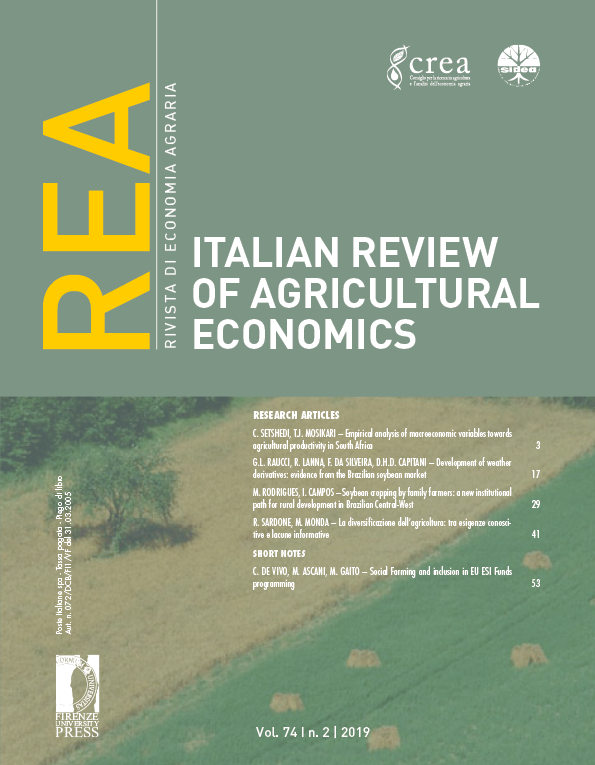Published 2016-08-06
Keywords
- dairy sector,
- CMO,
- time series analysis,
- asymmetric price transmission
How to Cite
Abstract
This research is an application of the econometric price series to the analysis of dairy chain efficiency in Italy. At a theoretic level, the price transmission and asymmetry in the speed of adjustment to positive and negative price changes is supported by the Industrial Organization, multi market equilibrium, food chain theories. However this does not provide a clear signal of competitiveness as many conditions may induce stickiness (curvature of demand, local cost and externalities, long term contracts,. While evidences from past EU studies about the dairy sector are mixed, several studies have demonstrated the evidence of price asymmetries in different market contests. The aim of this research is to examine the price dynamics along the dairy chain and offer some empirical evidences about the cointegration and asymmetric price transmission at different market levels. The parametric test of asymmetry in a multivariate VECM (vector error correction term), suggests symmetry in co-movement. To explore in deeper whether these results are robust with respect to nonlinearity it is estimated the threshold VECM model; the results suggest to reject the hypothesis of asymmetry with exception for the raw milk and wholesale butter. While market competitiveness can not be inferred only from evidence of asymmetry, these findings support the hypothesis that the market structure and policy in the Italian dairy chain didn’t affect greatly the price asymmetry. However, for the butter market, the public intervention seems to have generated speculative behavior among the operators and generated asymmetric price responses to positive/negative price changes.


